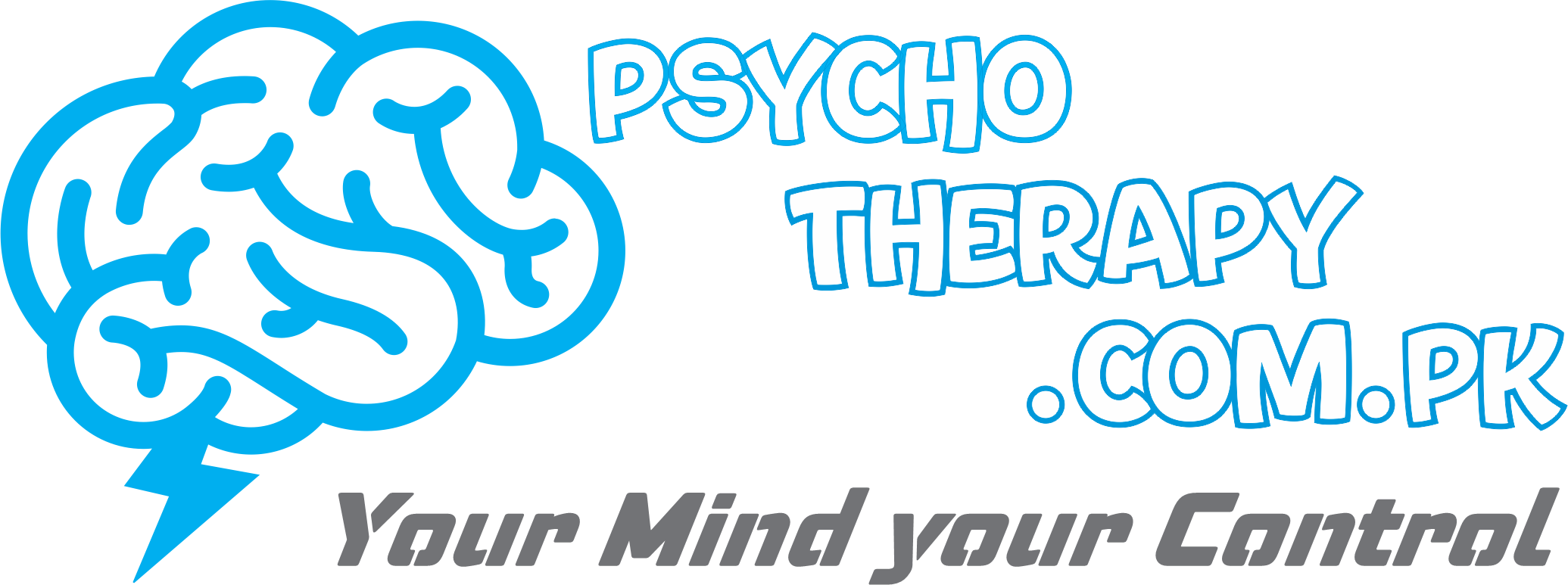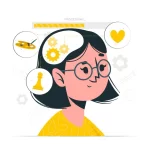What is meant by Cognitive Distortion?
Cognitive distortion refers to patterns of biased or irrational thinking that can lead individuals to perceive reality inaccurately. These distortions often stem from underlying cognitive biases and can contribute to negative emotions, maladaptive behaviors, and mental health issues such as anxiety and depression.

Explanation of Cognitive Distortions with examples
Let’s explore each cognitive distortion in more detail, along with examples:
All-or-nothing thinking (or black-and-white thinking):
This distortion involves viewing situations in extreme terms, with no middle ground or shades of gray. People who engage in all-or-nothing thinking tend to see things as either perfect or a total failure, without acknowledging any nuance or complexity.
Examples include:
- “If I’m not the best, then I’m a failure.”
- “If I make one mistake, the whole project is ruined.”
- “If I’m not perfect, I’m worthless.”
Overgeneralization:
Overgeneralization involves drawing broad conclusions based on limited evidence or single incidents. This distortion can lead individuals to make sweeping judgments about themselves, others, or the world based on isolated occurrences. For instance, someone who experiences rejection in a romantic relationship might overgeneralize by believing that they are unlovable and that they will never find happiness in future relationships.
Examples include:
- “I didn’t get the job, so I’ll never find a job I like.”
- “My last relationship ended badly, so all relationships are doomed.”
- “I failed one test, so I’m not smart enough for college.”
Catastrophizing:
Catastrophizing involves magnifying the importance or severity of a situation and imagining the worst possible outcome. People who catastrophize often engage in “what-if” thinking, anticipating the most negative scenarios and assuming they are inevitable.
Examples include:
- “I didn’t get invited to the party, so nobody likes me.”
- “I made a mistake at work, so I’m going to get fired and end up homeless.”
- “I have a headache; it must be a brain tumor.”
Personalization:
Personalization occurs when individuals take excessive responsibility for events or outcomes that are beyond their control, or when they blame themselves for things that are not their fault. This distortion can lead to feelings of guilt, shame, and self-blame.
Examples include:
- “My friend canceled our plans; it must be because I did something to upset them.”
- “My parents are arguing; it must be because I’m a bad child.”
- “My partner had a bad day; it must be because I didn’t support them enough.”
Filtering:
Filtering involves selectively focusing on negative aspects of a situation while ignoring any positive elements. People who engage in filtering tend to discount or dismiss evidence that contradicts their negative beliefs, leading to a skewed perception of reality.
Examples include:
- Receiving several compliments on a project but focusing only on one critical comment.
- Dwelling on a single mistake in an otherwise successful presentation.
- Ignoring moments of happiness in a relationship and fixating on minor disagreements.
Mind reading:
Mind reading occurs when individuals assume they know what others are thinking or feeling without any concrete evidence. This distortion often involves making negative assumptions about others’ intentions or beliefs, leading to misunderstandings and interpersonal conflict.
Examples include:
- Assuming a friend is mad at you because they didn’t respond to a text promptly.
- Believing your boss is disappointed in your performance because they didn’t praise your work.
- Thinking someone dislikes you because they didn’t smile when passing in the hallway.
Should statements:
Should statements involve imposing rigid and unrealistic expectations on oneself or others. People who engage in should statements often use words like “should,” “must,” or “ought to,” setting arbitrary standards that are difficult or impossible to meet. This distortion can lead to feelings of guilt, frustration, and self-criticism.
Examples include:
- “I should always be productive; taking breaks is lazy.”
- “They should know what I need without me having to ask.”
- “I must never make mistakes; making mistakes is unacceptable.”
Labeling:
Labeling involves using overly simplistic or negative labels to describe oneself or others, overlooking complexity and nuance. This distortion can lead to self-fulfilling prophecies and negative self-perceptions.
Examples include:
- Calling yourself a “loser” for making a mistake.
- Labeling someone as “stupid” for a single error in judgment.
- Describing yourself as “worthless” because of a failure.
Understanding these distortions and learning to challenge them can help individuals develop healthier thought patterns and improve their overall well-being.
How to deal with cognitive distortions?
Dealing with cognitive distortions involves recognizing them and then challenging and reframing the irrational thoughts. Here are some strategies to help address cognitive distortions:
- Awareness: The first step in dealing with cognitive distortions is to become aware of them. Pay attention to your thoughts and emotions, and identify when you might be engaging in distorted thinking patterns.
- Challenge the distortions: Once you’ve identified a cognitive distortion, challenge it by examining the evidence for and against the distorted thought. Ask yourself questions like:
- What evidence supports this thought?
- What evidence contradicts this thought?
- Is there a more balanced or realistic way to view this situation?
- Reality testing: Test the validity of your thoughts by seeking alternative perspectives or gathering more information. Consult trusted friends, family members, or mental health professionals to gain insight into your thoughts and perceptions.
- Mindfulness: Practice mindfulness techniques to become more present in the moment and observe your thoughts without judgment. Mindfulness can help you recognize cognitive distortions as they arise and choose how to respond to them consciously.
- Cognitive restructuring: Replace distorted thoughts with more balanced and realistic ones. Challenge negative self-talk by reframing statements in a more compassionate and constructive way. For example:
- Replace “I’m a failure” with “I made a mistake, but it doesn’t define my worth as a person.”
- Replace “I’ll never be able to do this” with “This is challenging, but I can learn and improve over time.”
- Practice self-compassion: Treat yourself with kindness and understanding, especially when confronting cognitive distortions. Acknowledge that everyone experiences distorted thinking at times, and it’s okay to make mistakes or have negative thoughts.
- Behavioral activation: Engage in activities that promote positive emotions and behaviors, even when you don’t feel like it. Taking action can help disrupt negative thought patterns and improve your mood.
- Seek professional help: If cognitive distortions are significantly impacting your daily life or mental health, consider seeking support from a therapist or counselor. Cognitive-behavioral therapy (CBT) is particularly effective in helping individuals identify and challenge cognitive distortions.
By practicing these strategies consistently, you can gradually reduce the influence of cognitive distortions and cultivate a more balanced and resilient mindset.
Therapies to treat the cognitive distortions
Several therapies have been shown to be effective in treating cognitive distortions, with Cognitive-Behavioral Therapy (CBT) being one of the most widely used and researched. Here are some of the best therapies for treating cognitive distortions:
- Cognitive-Behavioral Therapy (CBT): CBT is a structured, goal-oriented therapy that focuses on identifying and challenging cognitive distortions. In CBT, individuals learn to recognize their distorted thinking patterns, evaluate the evidence for and against these thoughts, and develop more balanced and realistic ways of thinking. CBT often includes homework assignments and practical exercises to help reinforce new thought patterns.
- Mindfulness-Based Cognitive Therapy (MBCT): MBCT combines elements of cognitive therapy with mindfulness practices to help individuals become more aware of their thoughts and emotions. By cultivating mindfulness skills, individuals learn to observe their cognitive distortions without judgment and develop greater resilience to negative thinking patterns.
- Dialectical Behavior Therapy (DBT): DBT is a type of therapy originally developed to treat borderline personality disorder, but it has since been adapted for various other mental health conditions. DBT incorporates elements of CBT along with mindfulness and acceptance-based strategies. It helps individuals learn skills to manage intense emotions, improve interpersonal relationships, and challenge cognitive distortions effectively.
- Acceptance and Commitment Therapy (ACT): ACT focuses on promoting psychological flexibility by encouraging individuals to accept their thoughts and feelings without judgment while committing to actions aligned with their values. Rather than trying to eliminate cognitive distortions, ACT helps individuals develop a more accepting and compassionate relationship with their thoughts, allowing them to live more fully in the present moment.
- Schema Therapy: Schema therapy is an integrative approach that combines elements of cognitive-behavioral, psychodynamic, and experiential therapies. It focuses on identifying and addressing deeply ingrained patterns or “schemas” that underlie cognitive distortions. Through techniques such as imagery, role-playing, and cognitive restructuring, individuals learn to challenge and change maladaptive schemas.
- Rational Emotive Behavior Therapy (REBT): REBT is a form of cognitive therapy that emphasizes the role of irrational beliefs in causing emotional distress. In REBT, individuals learn to identify and dispute irrational beliefs that contribute to cognitive distortions, replacing them with more rational and adaptive beliefs.
These therapies can be tailored to individual needs and preferences, and they are often used in combination with each other or with other therapeutic approaches. The effectiveness of therapy depends on factors such as the individual’s readiness for change, the quality of the therapeutic relationship, and the skill of the therapist.










